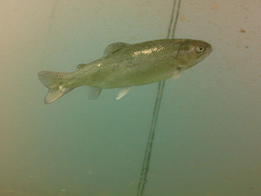
In one of my cases, an industrial water treatment facility had failed its bioassay using rainbow trout, a very delicate species. The effluent had excellent BOD/COD/TOC numbers, ammonia was less than 0.2 mg/L, and no other criteria pollutants could be found. The biological treatment unit had excellent biomass, high dissolved oxygen (DO) and every other operational parameter in range. After evaluating all data, the only thing that stood out was the bioassay test was conducted in pure fresh water with low chlorides and near neutral pH.
The only thing that stood out was an unexpected nitrite residual. Apparently, something in the ammonia oxidation process was creating conditions where nitrite was present in the effluent. Taking a cue from aquaculture work, nitrite increases in toxicity when pH decreases and chlorides are not present in sufficient quantity to prevent nitrite from crossing the gills and binding with hemoglobin (causing brown blood disease). In this case some change in influent makeup and environmental conditions created a biomass with deficient numbers of nitrite oxidizing bacteria (NOB - often called Nitrobacter). The response was:
- First screen influent and mixed liquor for inhibition of NOB organisms using a Tox-N test - concentrated paste of both nitrosomonas & nitrobacter for acute toxicity testing.
- After finding relatively low toxicity, adding concentrated NOB cultures to the system
- Ongoing - careful monitoring of basin nitrite and ammonia. With a rapid response screening and evaluation protocol if nitrite or ammonia increases out of the preset control range.

 RSS Feed
RSS Feed